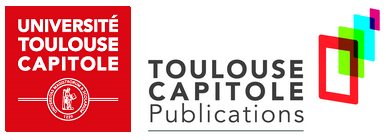Yu, Li (2023)
Essais sur la macro-finance et l'incertitude.
Toulouse School of Economics (Toulouse).
(2023)
Essais sur la macro-finance et l'incertitude.
Toulouse School of Economics (Toulouse).
Preview |
Text
Download (8MB) | Preview |
Abstract
Cet article étudie le biais domestique des banques. Nous documentons empiriquement que le biais bancaire domestique présente des fluctuations substantielles pour un panel de grands pays entre 2001 et 2020. Il est important de noter que le biais domestique bancaire et boursier n'existe plus depuis la Grande Récession, un phénomène que nous appelons biais domestique actions-banque puzzle. À l'aide d'un modèle d'autorégression vectorielle structurelle pour les États-Unis, nous établissons que les fluctuations du biais bancaire domestique sont très sensibles aux mesures de l'incertitude étrangère et aux changements de taux de politique monétaire. À la lumière de ces résultats, nous construisons un modèle de marché incomplet analytiquement traitable à deux pays pour étudier le comportement de prêt des banques internationales. Au cœur du modèle, le pass-through asymétrique des intérêts affecte la rentabilité des banques, qui interagit avec la gestion des frictions d'incertitude et façonne ainsi les préférences de crédit bancaire international dans des environnements de taux d'intérêt bas. Une politique monétaire accommodante proche de la borne inférieure de zéro incite les banques à augmenter leur biais domestique à mesure que le coût relatif de la gestion du risque augmente. De plus, les politiques réglementaires qui visent à améliorer la stabilité financière peuvent accroître le biais des banques nationales. Le planificateur social est donc confronté à un compromis entre stabilité financière et intégration financière. Enfin, nous analysons les conséquences macroéconomiques du biais bancaire domestique au sein d'un modèle quantitatif dynamique.
,This thesis consists of four independent chapters which study financial intermediaries and uncertainty from a macroeconomic perspective.The first chapter provides new empirical evidence on the heterogeneity inside financial intermediaries. Using a structural VAR model, we run two sets of experiments to explore the reaction of different banking sectors to different shocks. In the first experiments, we adopt short-run and proxy identification methods to check how they react to monetary policy shocks and discover that the same contractionary monetary shock triggers different responses in commercial banks and government-sponsored enterprises. In the second experiment, we use the max share identification method to respectively determine the shocks that affect banks and shadow banks the most. The shocks likely differ highly across commercial banks and GSEs, but commercial and private shadow banks might be highly connected.The second chapter studies the impact of monetary policy on the credit allocation of globally operating banks. We develop an analytical framework for global banking based on a portfolio approach. We find that in times of low-interest rates and large balance sheets, a further cut in the interest rate decreases bank profitability and has opposite effects on domestic and foreign lending, thereby increasing home bias. Extending the model to a dynamic general equilibrium setup with nominal rigidities, we find that with the portfolio re-balancing of the global banks, the prolonged period of low-interest rates is accompanied by a persistently high home bias, and the overall effectiveness of monetary policy is compromised.The third chapter empirically examines the home bias of globally operating banks. We collect quarterly data on a country level for the past two decades and compute the bank home bias index. Banks have exhibited a V-shaped home bias for many countries during the past two decades. Next, we analyze the drivers of banks' home bias using a structural vector autoregression model on US data. The results show that foreign uncertainty explains over forty percent of home bias variation. In addition, the monetary policy rate increases and then suppresses bank home bias. Lastly, we study the cyclicality of bank home bias and confirm that the bias is negatively correlated with domestic output.The last chapter explores different types of uncertainty shocks arising from different types of financial assets, with empirical evidence and a theoretical framework. First, by applying novel identification methods in structural autoregression (SVAR) models on different asset categories, we provide novel evidence on the heterogeneity in responses of real economic variables to uncertainty shocks. We show that uncertainty shocks generated by stock volatility have less impact than gold volatility in the post-crisis era. Both types of uncertainty shocks induce changes in the sentiment of both investors and households. Based on these findings, we sketch a simple theoretical framework that illustrates how fundamental uncertainty, asset-specific characteristics, and non-fundamental behavioral factors contribute to asset volatilities.
| Item Type: | Thesis (UNSPECIFIED) |
|---|---|
| Other titles: | Essays on Macro-Finance and Uncertainty |
| Language: | English |
| Date: | 12 June 2023 |
| Keywords (French): | Politique monétaire, Banques -- Gestion du risque, Incertitude (économie politique) |
| Subjects: | B- ECONOMIE ET FINANCE > B5- Finances |
| Divisions: | TSE-R (Toulouse) |
| Ecole doctorale: | Toulouse School of Economics (Toulouse) |
| Site: | UT1 |
| Date Deposited: | 28 May 2024 13:47 |
| Last Modified: | 10 Jun 2024 09:25 |
| URI: | https://publications.ut-capitole.fr/id/eprint/49448 |




 Tools
Tools Tools
Tools
